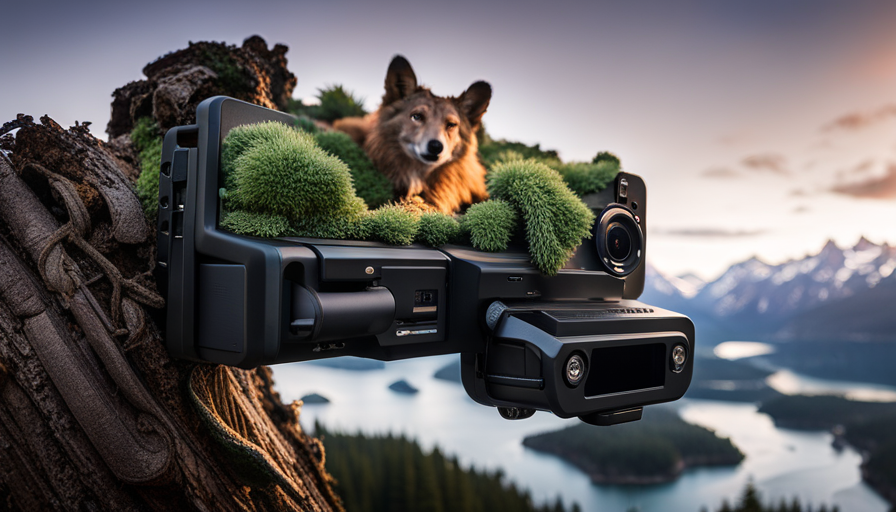Trail cameras have revolutionized the way wildlife enthusiasts and hunters capture footage and images of animals in their natural habitats. These cameras are designed to withstand harsh weather conditions and capture high-quality footage and images even in low light conditions.
However, transferring these files from the trail camera to a computer can be a daunting task for many users. Fortunately, there are several methods available to connect a trail camera to a PC, each with its own set of pros and cons.
For instance, imagine a wildlife photographer who has just returned from a safari with a memory card filled with fascinating footage and images. He wants to transfer these files to his computer for editing and sharing on social media. However, he is not sure how to go about it.
This is where the four easy methods described in this article come in handy. By following the step-by-step instructions, he can connect his trail camera to his PC and transfer the files seamlessly.
This article explores each of these methods, their advantages and disadvantages, and provides useful tips to troubleshoot any issues that may arise during the process.
Ways to View Photos/Videos
The article discusses four methods for viewing trail camera photos on a computer, each with their own advantages and limitations.
The first method is the USB cable method, which is the easiest but not the fastest. It requires a charged camera and cable to transfer the footage to the computer.
The second method is the SD card reader method, which is faster and doesn’t require a charged camera or cable. It is also 10 times faster than the USB cable method. However, the SD card should be formatted after uploading footage.
The third method is the WiFi method, which requires a camera with a WiFi module and close proximity to a network. This method is not ideal for long-range transmission or physical barriers as the WiFi module in the camera is underpowered.
The fourth and final method is the cellular trail camera, which automatically uploads footage to cloud-based storage. However, this method requires a budget for purchase and a monthly data plan.
Overall, the article emphasizes the ease of the methods and the importance of formatting the SD card after uploading footage. The author provides a troubleshooting guide for trail cameras that won’t turn on and encourages readers to share their own tips and methods for viewing trail camera photos on a computer.
The article includes a table of contents for easy navigation, affiliate commission disclosure, share buttons for social media platforms, and links to other relevant articles on GudGear. Additionally, the article includes video and photo examples of trail camera footage and ads for outdoor gear. The link to Moultrie for an explanation of a cellular trail camera is also provided.
Pros and Cons of Each Method
One important consideration when viewing trail camera photos on a computer is to weigh the advantages and disadvantages of each available method. The USB cable method is the easiest but not the fastest, while the SD card reader method is faster and does not require a charged camera or cable. The WiFi method is convenient but limited by the camera’s underpowered WiFi module and requires a close proximity to the network. Finally, the cellular trail camera provides automatic uploads to cloud-based storage but requires a budget for purchase and a monthly data plan.
To further illustrate the pros and cons of each method, we have provided a table below:
| Method | Pros | Cons |
|---|---|---|
| USB Cable | Easy to use | Slow transfer speed |
| SD Card Reader | Fast transfer speed, does not require charged camera or cable | SD card should be formatted after uploading footage |
| WiFi | Convenient, no need for cables | Limited by underpowered WiFi module, requires close proximity to the network |
| Cellular Trail Camera | Automatic uploads to cloud-based storage | Requires budget for purchase and monthly data plan |
By considering the advantages and disadvantages of each method, users can choose the best option for their needs when viewing trail camera photos on a computer. It is also important to note that regardless of the chosen method, formatting the SD card after uploading footage is crucial for optimal performance.
Additional Tips and Resources
To enhance the experience of viewing trail camera photos on a computer, users may benefit from additional tips and resources. One such resource is the trail camera manual, which provides detailed information on how to navigate the camera’s settings and features. It is important to read the manual thoroughly to understand how to use the camera and its various functions, including how to format the SD card correctly.
Another tip is to invest in a good quality SD card reader that is compatible with your computer. This will ensure that you can quickly and easily transfer your footage without the need for a charged camera or USB cable.
Additionally, users should consider backing up their footage to an external hard drive or cloud-based storage to prevent loss of important footage.
By following these tips and utilizing additional resources, users can enhance their trail camera experience and make the most out of their wildlife photography.

